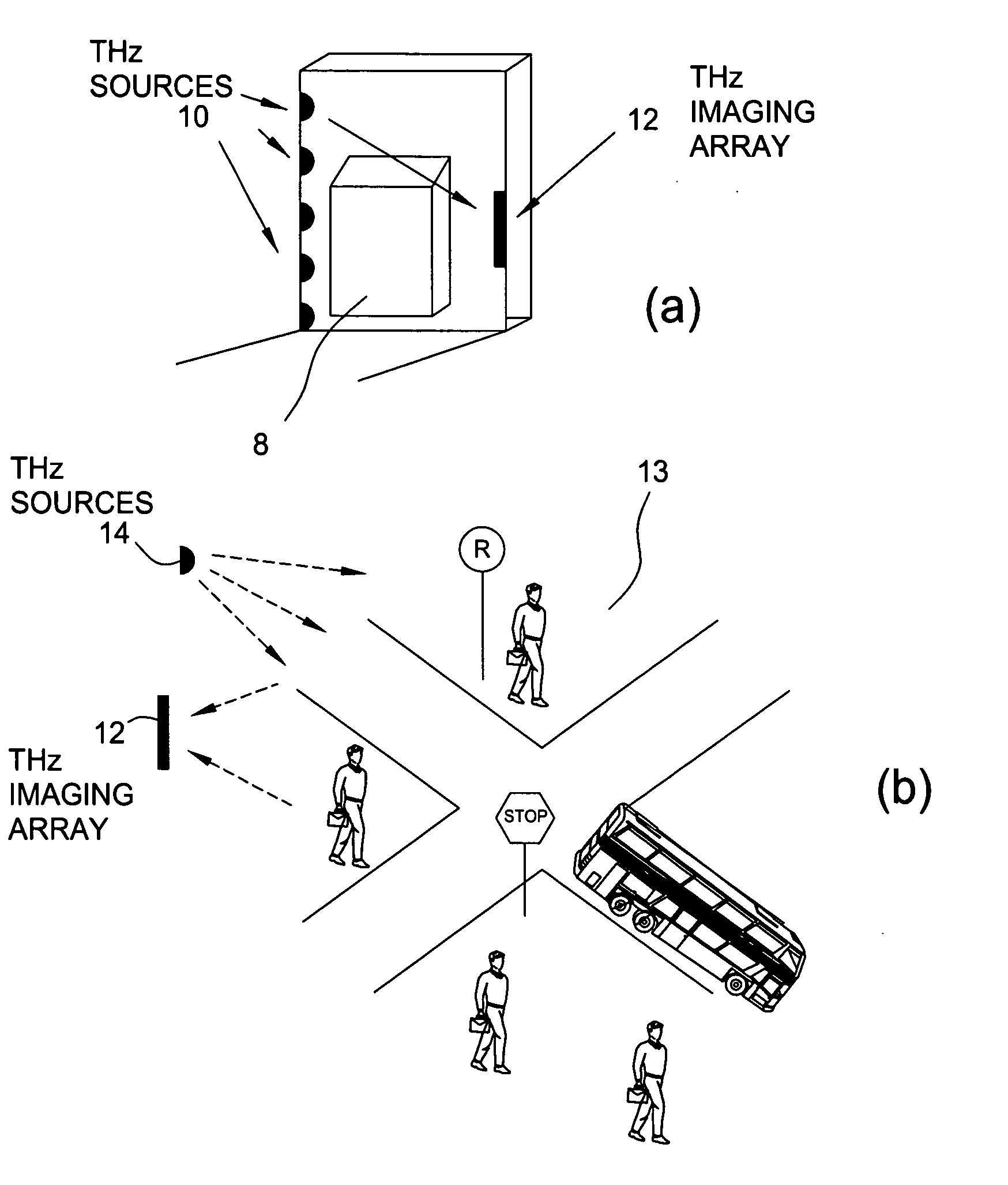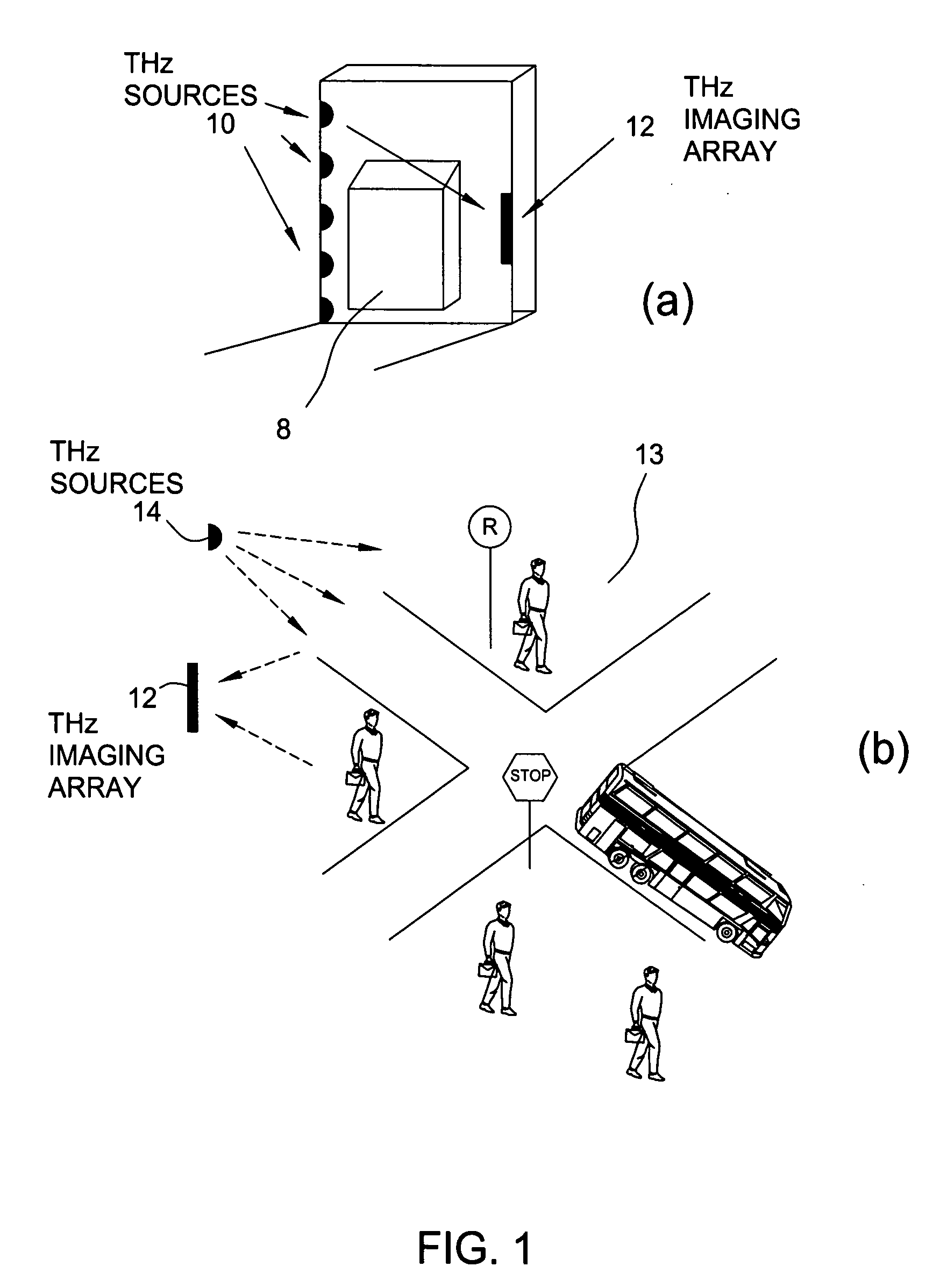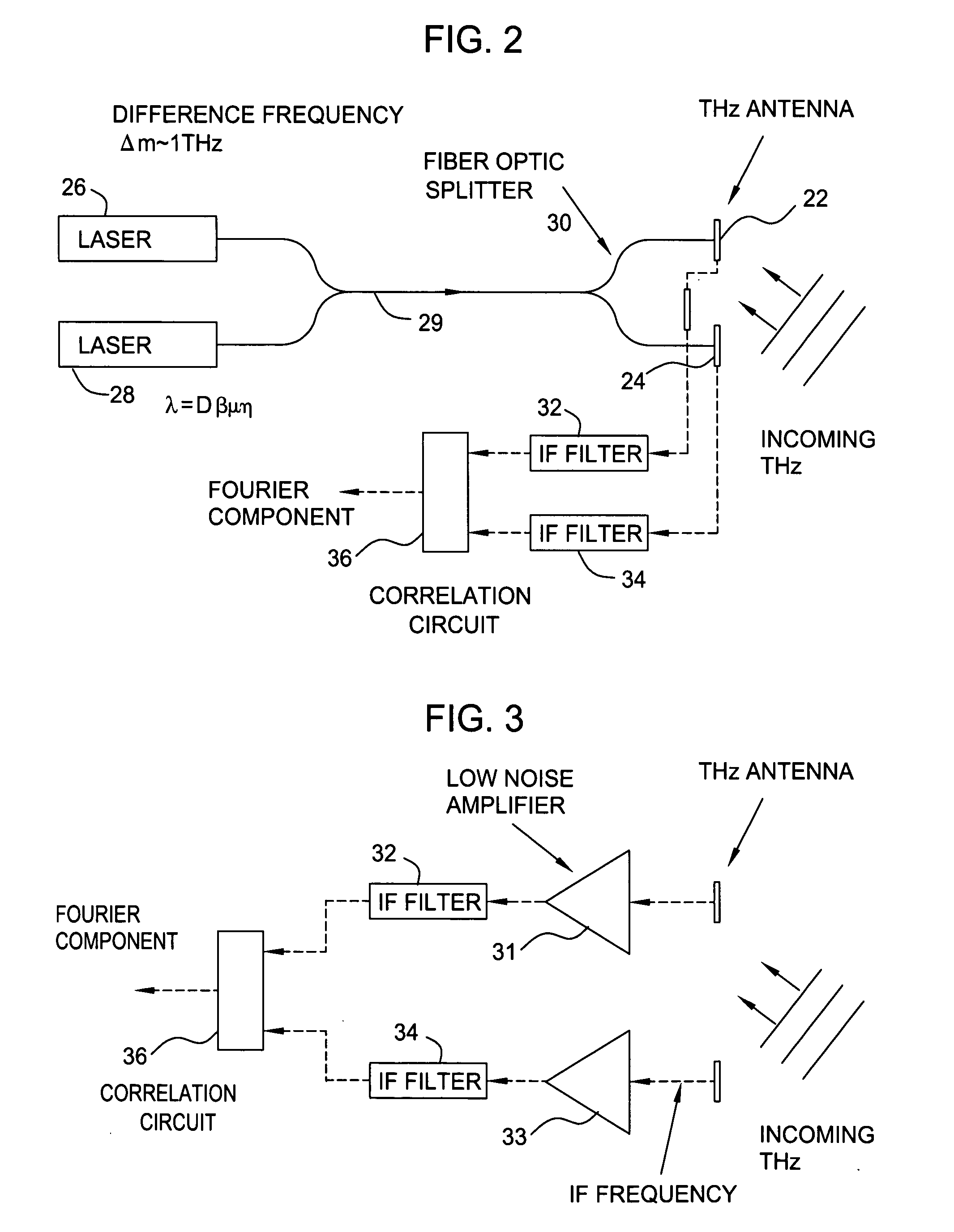Terahertz imaging for near field objects
a near field object and terahertz technology, applied in the field of terahertz or tray imaging systems, can solve the problems of inconvenient application, inconvenient acquisition of data, and inability to achieve coherent or incoherent thz radiation,
- Summary
- Abstract
- Description
- Claims
- Application Information
AI Technical Summary
Benefits of technology
Problems solved by technology
Method used
Image
Examples
Embodiment Construction
Overview of Imaging System
[0031] Terahertz (THz) imaging systems generally include two major components, namely, a THz transmitter or source and a THz receiver including an imaging array. These two components can be disposed either as shown in FIG. 1a for THz signal transmission through a target 8 or as shown in FIG. 1b for THz signal reflection by a target 13. The THz transmitter generates electromagnetic radiation at a desired THz frequency suitable for the imaging process and directs the radiation at the object or region of interest, which is also known as the target. The THz receiver includes both an imaging array comprised of a plurality of detector elements disposed on a surface to receive the THz signals from the target, via transmission or reflection, and a signal processor that converts the received THz signals into an image of the target from which the presence of specified compositions can be determined. This image is typically a frequency domain signature of the target...
PUM
| Property | Measurement | Unit |
|---|---|---|
| field of view | aaaaa | aaaaa |
| wavelengths | aaaaa | aaaaa |
| distances | aaaaa | aaaaa |
Abstract
Description
Claims
Application Information
 Login to View More
Login to View More - R&D
- Intellectual Property
- Life Sciences
- Materials
- Tech Scout
- Unparalleled Data Quality
- Higher Quality Content
- 60% Fewer Hallucinations
Browse by: Latest US Patents, China's latest patents, Technical Efficacy Thesaurus, Application Domain, Technology Topic, Popular Technical Reports.
© 2025 PatSnap. All rights reserved.Legal|Privacy policy|Modern Slavery Act Transparency Statement|Sitemap|About US| Contact US: help@patsnap.com



